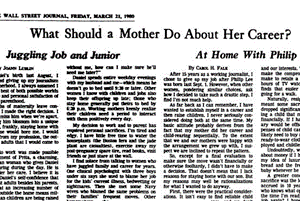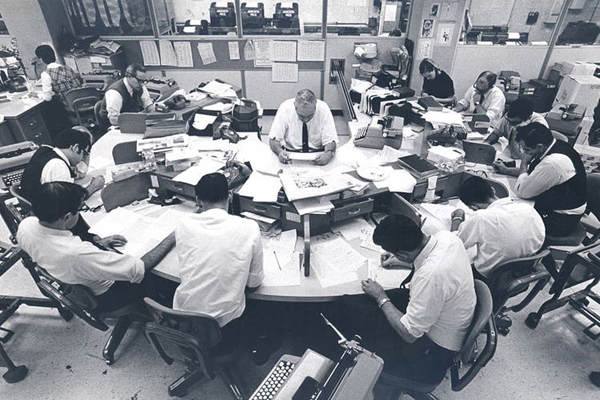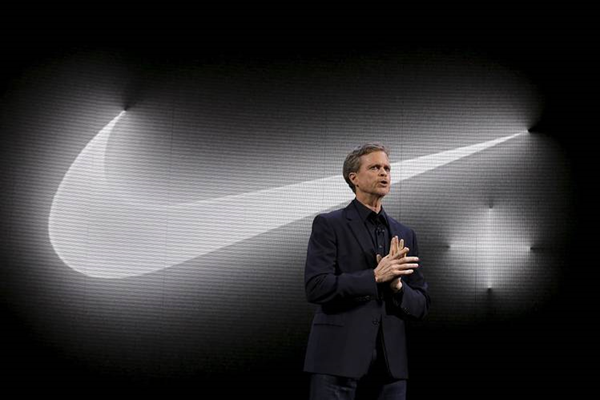THE
WALL STREET JOURNAL.
BUSINESS
| Management
|
Management &
Careers
Honoring Joann Lublin: Recipient of the 2018 Loeb Lifetime
Achievement Award
Over a nearly
five-decade-long career, Lublin was a role model to generations of
reporters
video
|
|
The Wall Street Journal’s staff
made this video in Joann Lublin’s honor for the 2018 Gerald Loeb
Awards ceremony. |
By
Matt Murray
June 26, 2018 11:08 a.m. ET
Many legends have
passed through The Wall Street Journal during its 129 years, but Joann
Lublin, recipient of the 2018 Gerald Loeb Lifetime Achievement Award,
is a unique and singular figure in the history of the institution.
|

The Wall Street Journal |
|
Joann, who recently
retired after nearly five decades at the Journal, didn’t earn this recognition
through one or two big stories, though she has had plenty of those, or one or
two big awards, though she has had many of those, including a Pulitzer.
She earned it because every day she worked at the
Journal, she modeled the very best of what journalism is about.
Joann’s byline became a fixture of the Journal as
she wrote about many of the biggest stories in recent business history and many
of the boldface names and leaders in the global economy.
Her source list is a Who’s Who of prominent figures,
many of whom have come to respect her knowledge, professionalism and doggedness
even as they often cower at the prospect of her calls. To quote one of the many
executives whom she covered: “She was inquisitive, professional and fair. No
matter what the subject, I never felt that she was loaded with ‘Gotcha’
questions, and her reporting was complete and unbiased.” As another said: “When
you get a message that she calls, it’s time to take a couple aspirin and drink
three Coca-Colas before you call her back.”
In the year leading up to her retirement, Joann
worked with beat reporters to break the news that insurance giant
AIG was replacing its chief executive,
revealed that General Electric was flying for years
a spare business jet for ex-CEO Jeff Immelt,
gave the world its first look at
David Rockefeller’s extensive and meticulous set of
Rolodex cards, and broke the news that
Lloyd Blankfein would be stepping down as
chairman and CEO of Goldman Sachs.
The first of Joann’s many, many bylines appeared in
the Journal during her 1969 internship with the paper. Joann joined the
Journal’s San Francisco bureau in 1971 as one of the paper’s first female
reporters, when the Dow Jones Industrial Average was trading around 900.
She worked in the Chicago bureau between 1973 and
1979 and then moved to the Washington bureau, where she covered several beats
including housing and urban affairs. In 1987, she was promoted to news editor
and joined the London office, helping run the Journal’s first women-led bureau.
She returned to New York to launch the Journal’s management coverage and its
first careers column. She was part of a WSJ team that
shared a Pulitzer Prize in 2003 for a
series of stories on
corporate malfeasance.
In recent years, as Management News Editor, Joann
helped drive our coverage of corporate governance and management issues, while
writing a regular advice column,
“Your Executive Career.” In late 2016, she
published a book about female executives titled “Earning It: Hard-Won Lessons
from Trailblazing Women at the Top of the Business World.”
Joann is what all of us aspire to be—relentless,
blunt, persistent, honest, collegial, exhaustive and exhausting—and, of course,
a scoop machine. In her more than 3,000 stories, more than 260 of them for the
front page, Joann served readers by reporting on many of the biggest stories,
people and issues in business of her time. She wrote about Enron, GE and
Steve Jobs’s liver transplant. She wrote about
the fall of Dennis Kozlowski at Tyco and
the rise of women in the workplace.
Her relentless drive continued even
through her last week of work at the Journal, when she helped deliver an
inside look at a boys-club culture at
Nike.
Workplace
Advice I Wish I Had Known
Before venturing into retirement, Joann offered tips on navigating
workplace issues, including rampant gender bias, gleaned from her career.

WALL STREET JOURNAL ARCHIVES |
For several generations of journalists, she has been
a model of how to work ever-harder to drive the news, how to get people to talk
when they don’t want to, and how to sniff out big stories.
As one of the first women at the Journal who wasn’t
a secretary, she has been a particular role model for women, someone who fought
for pay equity and management recognition and who showed everyone that anyone
could balance both a family and a demanding career, at a time when many thought
women couldn’t, or shouldn’t, try.
Most of all she is someone who every day made clear
how important, meaningful, fun and even joyful a life in journalism can be.
Write to
Matt Murray at
matt.murray@wsj.com


